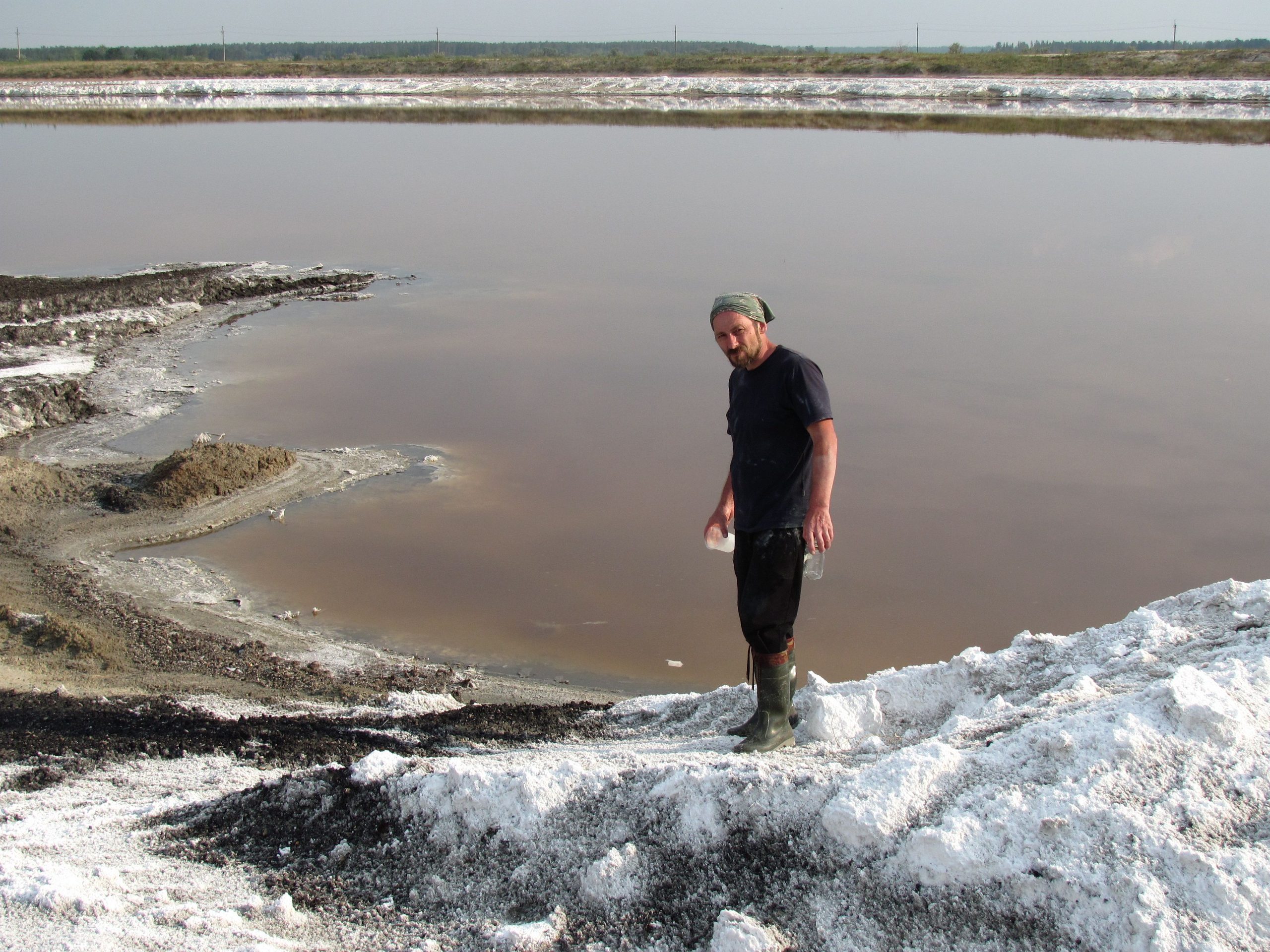From an evolutionary perspective, it is like discovering a new class of mammals. TU Delft researchers found an entirely new class of archaea in a salty Siberian lake. They christened this micro-organism Methanonatronarchaeia.
Dimitry Sorokin at the shallow, salty, alkaline lakes of Siberia’s Kulunda Steppe. (Photo: Sorokin)
No beach time during the summers of 2013 and 2015 for micro-biologist Dimitry Sorokin of the TU Delft faculty of Applied Sciences and the Russian Academy of Sciences in Moscow. He spent these summers wading into the shallow, salty, alkaline lakes of Siberia’s Kulunda Steppe. What he was after was the source of the stink of sulphur and methane that bubbled up from the disturbed sediments.
Previous (genetic) research had shown that some of the microorganisms in the lake contained a gene for part of the methane-processing methyl-coenzyme M reductase complex, but Sorokin didn’t know which microbial species. Given its ability to produce methane (biogas) under harsh conditions, this micro-organism could be of use for industry.
Sorokin collected mud from the lake and returned to Moscow to culture the micro-organisms it contained. What he found —in the samples from the Siberian lakes as well as those from other salty lakes around the world — was an entirely new class of archaea, which he called Methanonatronarchaeia.
Tongue twister
Mark van Loosdrecht is a co-author of the paper that was published last month describing the newly discovered micro-organism, with the tongue-twisting name: Methanonatronarchaeum thermophilum gen. nov., sp. nov. and ‘Candidatus Methanohalarchaeum thermophilum’, extremely halo(natrono)philic methyl-reducing methanogens from hypersaline lakes comprising a new euryarchaeal class Methanonatronarchaeia classis nov.
“From an evolutionary perspective, discovering a new class of bacteria is comparable to discovering a new class of mammals. This is certainly not something that happens every month,” says Van Loosdrecht with a sense of understatement. “It is the perseverance of researchers like Sorokin that make this possible. Growing these kinds of bacteria requires much care and focus. They grow in very alkaline or salty conditions.”
From Russia with methane
Last year TU Delft researchers already published some of their findings – amongst which the newly discovered pathway of methane production in Nature Microbiology. The methanonatronarcheia reduces methyl groups (-CH3) into CH4 with electrons it draws from hydrogen (H2). And it does so in conditions where other bacteria cannot survive: extreme alkaline (pH 10), extreme salinity (4 mol sodium per litre) and very hot (48-55 degrees Celsius). Read more about this feat in Delta’s article from last year, ‘From Russia with methane‘
The discovery of this organism is good news for industry, for the production of biogas. With most microorganisms that produce biogas (methane), you end up with a mixture of methane and carbon dioxide. But if you produce biogas under alkaline conditions – which these newly discovered micro-organisms are capable of – you end up with pure methane, since the carbon dioxide stays dissolved in solution. “And,” adds Van Loosdrecht, “for processing waste water there is much potential in being able to produce biogas under very salty conditions.”
Do you have a question or comment about this article?
tomas.vandijk@tudelft.nl


Comments are closed.